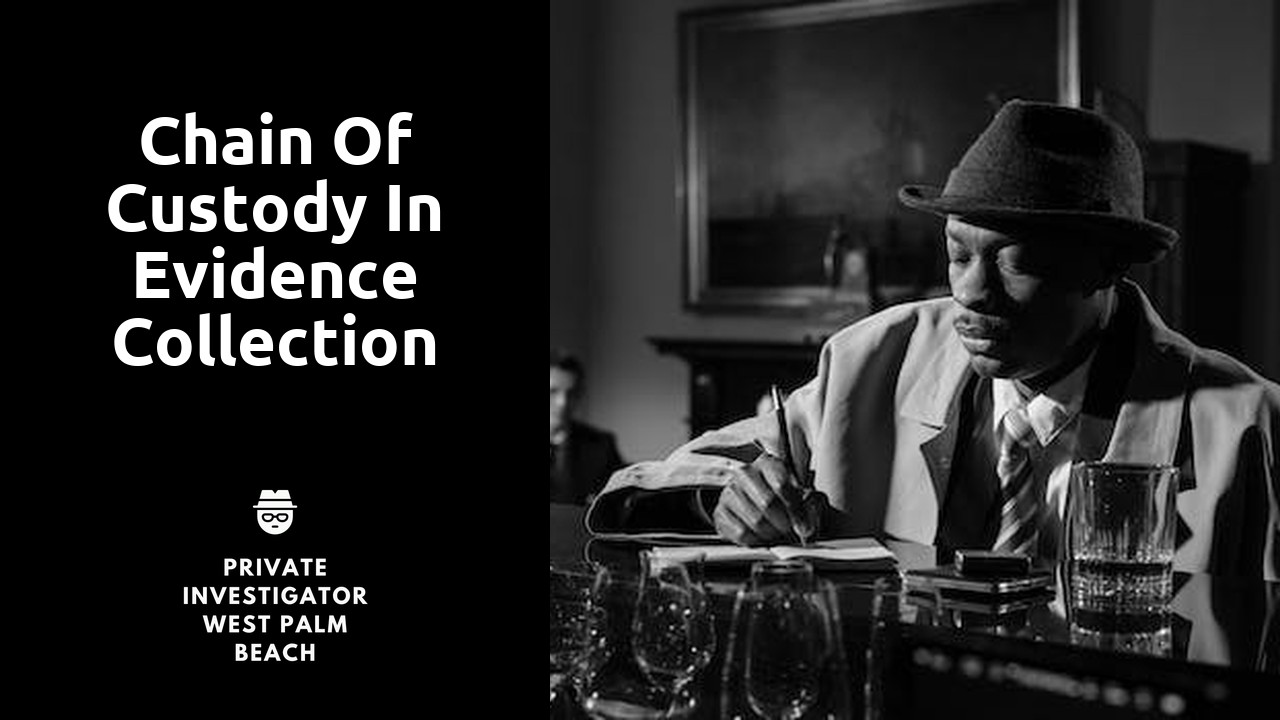
Chain of Custody in Evidence Collection
The Vital Role of Documentation in Evidence Collection
The vital role of documentation in evidence collection cannot be overstated. In any investigation or legal proceeding, documentation serves as the foundation upon which the entire case is built. Without proper documentation, the credibility and integrity of the evidence can come into question, potentially jeopardizing the outcome of the case.
Documentation plays a crucial role in several aspects of evidence collection. Firstly, it helps establish a clear and concise record of the actions taken during the collection process. This includes documenting the collection methods used, the location and condition of the evidence, and any relevant observations or findings. Additionally, documentation ensures that crucial details are not overlooked or forgotten, providing a comprehensive and accurate account of the evidence collection process. Overall, effective documentation serves to enhance transparency, accountability, and confidence in the integrity of the evidence.
Ensuring the Integrity of Evidence: Best Practices for Handling
In order to ensure the integrity of evidence, it is crucial to follow best practices for handling. First and foremost, it is essential to establish a secure and controlled environment for the evidence. This means limiting access to authorized personnel only and implementing security measures such as surveillance cameras and restricted entry. By maintaining a strict chain of custody, which includes documenting every individual who comes into contact with the evidence, the risk of tampering or contamination can be minimized.
Another important practice is to handle the evidence with care and precision. This involves wearing appropriate protective gear, such as gloves and masks, to prevent cross-contamination and DNA transfer. Additionally, using clean and sterile tools during the handling process is essential. Any contact with the evidence should be documented, including the date, time, and purpose of each interaction. By adhering to these best practices, the integrity of the evidence can be upheld, ensuring its reliability and validity in legal proceedings.
The Dance of Evidence: Steps for Proper Collection and Preservation
When it comes to proper collection and preservation of evidence, it is crucial to follow a systematic approach. This involves performing a series of carefully planned steps in order to ensure the integrity of the evidence and maintain its admissibility in court.
The first step in the dance of evidence collection is to thoroughly document the scene. Photographs should be taken from multiple angles and distances to capture all relevant details. Descriptive notes should also be taken, providing a written account of the scene and any significant observations. This documentation will serve as a visual and written record of the original state of the evidence, which is vital in later stages of the legal process.
Maintaining the Chain: Procedures for Securing Evidence
Maintaining the chain of custody is an essential component of securing evidence in any legal case. From the moment evidence is collected, it must be carefully handled and tracked to ensure its integrity and admissibility in court. This involves following specific procedures to prevent tampering or contamination, as well as keeping detailed records of everyone who comes into contact with the evidence.
One of the first steps in securing evidence is the accurate and thorough documentation of its collection. This includes recording the time, date, and location of the collection, as well as the names of the individuals involved. Additionally, any relevant observations or conditions should be noted to provide context for the evidence. These documentation procedures help establish a clear trail of custody, providing transparency and accountability in the handling of evidence.
Expert Tips for Establishing a Solid Foundation in Evidence Collection
Establishing a solid foundation in evidence collection is crucial for the success of any investigation or legal case. To ensure accuracy and reliability, experts recommend following a few essential tips. First and foremost, it is imperative to have a clearly defined and comprehensive plan in place before embarking on the process. This plan should outline the specific goals, objectives, and scope of the evidence collection, as well as any potential challenges or limitations that may arise. By having a well-thought-out plan, investigators can effectively allocate resources and streamline the collection process, ultimately increasing the chances of obtaining crucial evidence.
Another key tip for establishing a solid foundation in evidence collection is to prioritize thorough documentation at every stage. This means meticulously recording all details related to the evidence, including the date, time, location, and individuals involved in its discovery or collection. Additionally, detailed notes should be taken during any interviews or examinations conducted as part of the process. Clear and accurate documentation is essential not only for internal purposes but also for potential legal proceedings. It ensures a transparent and traceable trail of evidence, bolstering its credibility and admissibility in court.
The Art of Documentation: How to Create a Solid Trail in Evidence Collection
In the world of evidence collection, documentation plays a vital role in ensuring the integrity of the collected evidence. It is the essential tool that creates a solid trail, allowing investigators and legal professionals to retrace the steps taken during the collection process. Documentation provides a clear record of what was done, when it was done, and by whom, leaving no room for uncertainty or doubt.
To create a solid trail of documentation, there are key practices that should be followed. First and foremost, it is crucial to be thorough and meticulous in recording every detail related to the evidence collection process. This includes keeping accurate notes of observations, actions taken, and any relevant conversations or interactions. Additionally, it is essential to use a standardized format for documentation to ensure consistency and facilitate easy reference. Clear and concise language should be used, avoiding any ambiguity or confusion. By adhering to these practices, investigators can create a comprehensive and reliable trail of documentation that will stand up to scrutiny in the court of law.
Related Links
Search and Seizure Laws in Private InvestigationsAdmissibility of Evidence in Court